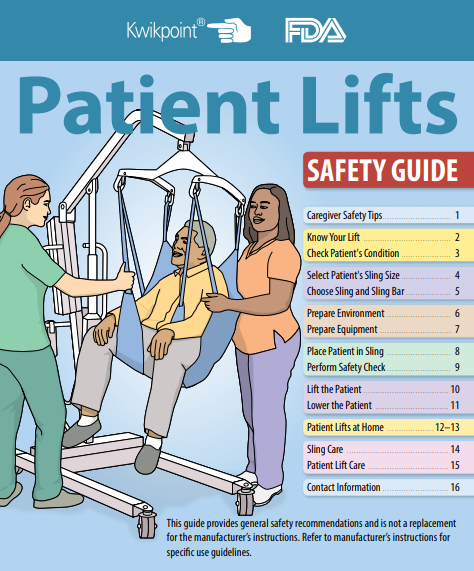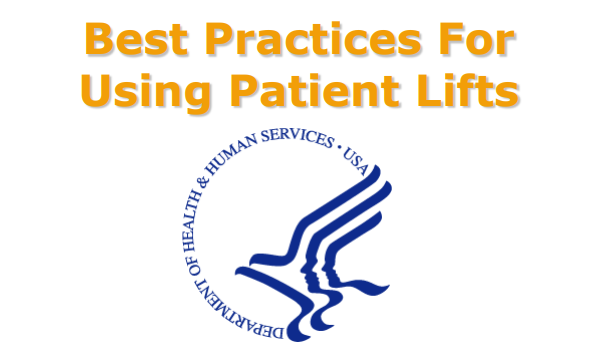The FDA office of Surveillance and Biometrics and Safe Patient Handling have found improper use of patient lifts and patient slings have lead to client falls that have resulted in:
- head traumas
- fractures
- deaths
Safe patient handling laws mandating the use and maintenance of all patient handling and moving equipment used to transfer patients have been passed in several states, Minnesota included.
- However, improper use of patient lifts and patient slings can pose significant public health risks. Patient falls from these devices have resulted in severe patient injuries including head traumas, fractures, and deaths.
- Follow the instructions for washing and maintaining the slings to the manufacturers requirements.
- Create and follow a maintenance safety inspection checklist as part of your safe patient handling program to detect worn or damaged parts that need immediate replacement or repair.
- Users of patient lifts must read all instructions provided by the manufacturer in order to safely operate the device.

The FDA has compiled a list a best practices that, when followed, can help mitigate the risks associated with patient lifts. Users of patient lifts should:
- Receive training and understand how to operate the lift.
- Match the sling to the specific lift and the weight of the patient. A sling must be approved for use by the patient lift manufacturer. No sling is suitable for use with all patient lifts.
- Inspect the sling fabric and straps to make sure they are not frayed or stressed at the seams or otherwise damaged. If there are signs of wear, do not use it.
- Keep all clips, latches, and hanger bars securely fastened during operation.
- Keep the base (legs) of the patient lift in the maximum open position and situate the lift to provide stability.
- Position the patient’s arms inside the sling straps.
- Make sure that the patient is not restless or agitated.
- Lock the wheels on any device that will receive the patient such as a wheelchair, stretcher, bed, or chair.
- Make sure that the weight limitations for the lift and sling are not exceeded.
- Follow the instructions for washing and maintaining the sling.
- Create and follow a maintenance safety inspection checklist to detect worn or damaged parts that need immediate replacement.
Visit these popular pages:




